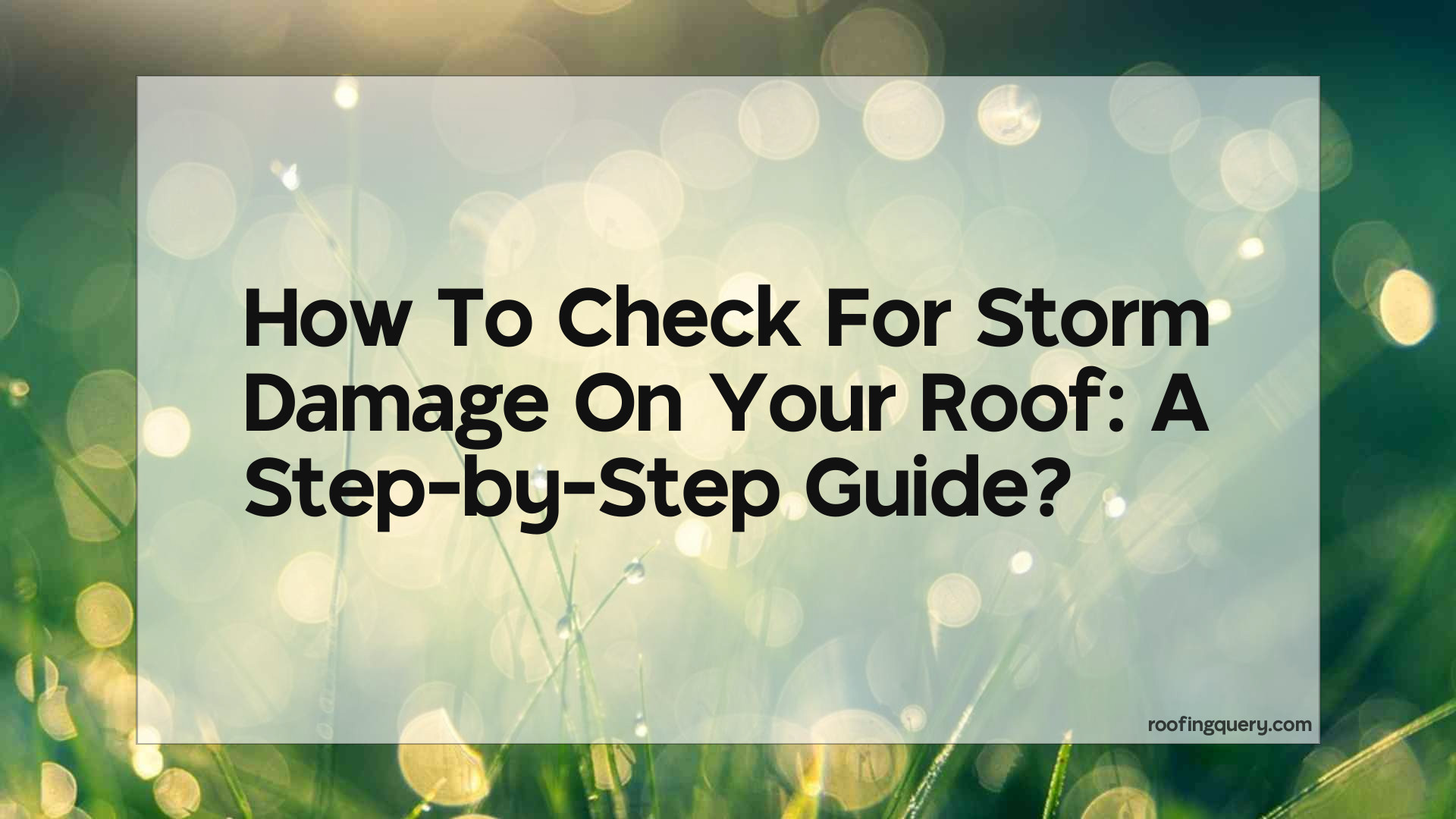It’s important to inspect your roof for damage after a storm. If left unchecked, damaged roofs can lead to serious problems like leaks, drafts, and even collapse. Use this step-by-step guide to check for storm damage on your roof.
1. Climb up to your roof and take a look around. Look for any missing or damaged shingles. Also look for any cracks or holes in the roof.
2. If you see any damage, take a photo of it. This will be helpful when you talk to your insurance company.
3. Once you’re back on the ground, inspect your gutters and downspouts. Look for any debris that may have been blown into them during the storm.
4. If you have a second story, take a look at the windows. Look for any cracks or holes in the glass.
5. Once you’ve inspected the outside of your roof, it’s time to go inside. Check for any leaks in the ceilings or walls.
6. If you find any damage, call your insurance company and a roofing contractor. They will be able to help you repair the damage and prevent any further problems.
What Are Some Signs That Your Roof Might Have Sustained Storm Damage?
If your home or business has experienced a storm, it is important to inspect your roof for damage. Many times, storm damage is not immediately apparent and may only become evident after further examination. Here are some signs that your roof might have sustained storm damage:
-Missing or damaged shingles: High winds can cause shingles to blow off your roof. If you see any missing or damaged shingles, it is important to have them replaced as soon as possible to prevent further damage.
-Damaged gutters: Gutters can become damaged or dislodged during a storm. If you see any damage to your gutters, it is important to have them repaired or replaced to prevent water damage to your roof and home.
-Leaking: If you see any leaks in your home after a storm, it is likely that your roof has sustained damage. It is important to have any leaks repaired as soon as possible to prevent further damage to your roof and home.
If you suspect that your roof has sustained storm damage, it is important to have it inspected by a professional as soon as possible.
How Can You Tell If A Roof Is Structurally Sound After A Severe Storm?
After a severe storm, it is important to inspect your roof for any damage. Here are a few things to look for:
1. Look for any missing or damaged shingles.
2. Inspect the gutters and downspouts for any debris or damage.
3. Look for any cracks or holes in the roof.
4. Check for any loose or missing nails.
5. Inspect the flashing around any chimneys or vents.
If you notice any of these damage, it is important to have a professional roofer inspect the roof to determine if any repairs or replacement is necessary.
What Should You Do If You Find Damage To Your Roof After A Storm?
If you find damage to your roof after a storm, you should call your insurance company and a roofing contractor to have the damage assessed and repaired.
For example, after a severe storm in my area, I found that a few of my shingles had been blown off and there was some water damage in my attic. I called my insurance company and they sent an adjuster out to assess the damage. They determined that I had a valid claim and that my insurance would cover the cost of repairs. They also recommended a few roofing contractors to me. I called one of the contractors and they came out to give me an estimate. I ended up hiring them to do the repairs and my insurance company covered the cost.
How Can You Prevent Storm Damage To Your Roof In The Future?
If you live in an area that’s prone to severe weather, it’s important to take steps to protect your home from storm damage. One of the most vulnerable parts of your home during a storm is the roof. High winds can easily damage or even destroy a roof, leaving your home vulnerable to water damage and other damage from the elements.
There are several things you can do to help prevent storm damage to your roof:
1. Inspect your roof regularly.
Be sure to check your roof for any signs of damage, such as missing or damaged shingles. If you see any damage, be sure to have it repaired as soon as possible.
2. Keep your gutters clean.
Gutters that are full of debris can easily become overloaded during a storm, which can cause them to break or collapse. Be sure to clean your gutters regularly to help prevent this from happening.
3. Trim trees and shrubs around your home.
Trees and shrubs that are too close to your home can easily damage your roof during a storm. Be sure to trim any trees or shrubs that are within 10 feet of your home to help prevent this from happening.
4. Install hurricane straps.
If you live in an area that’s prone to hurricanes, be sure to install hurricane straps on your roof. These straps help to secure your roof in place and can help prevent it from being blown away in high winds.
5. Cover your windows.
If your home has windows, be sure to cover them during a storm. High winds can easily break unprotected windows, which can cause water damage and other damage to your home.
By following these tips, you can help prevent storm damage to your roof and keep your home safe during severe weather.
If you’re still unclear on any of the steps, please feel free to leave a comment below and we’ll get back to you as soon as possible.


